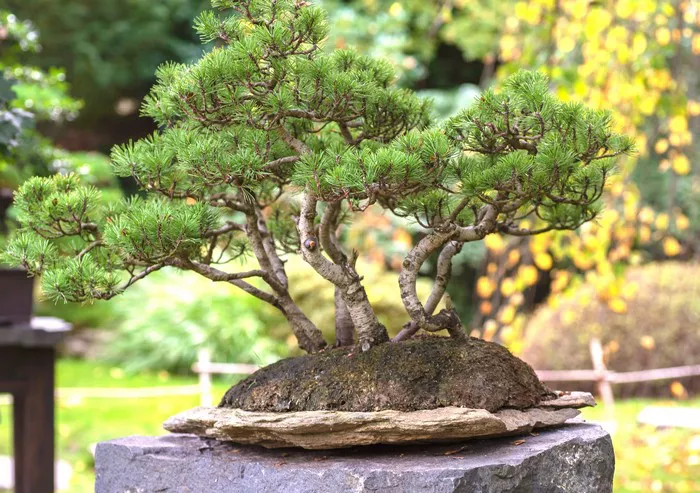Bonsai trees, with their intricate beauty and timeless elegance, have long captivated enthusiasts around the world. These miniature trees, meticulously cultivated over years, embody the harmony between nature and human artistry. However, behind their aesthetic allure lies a fundamental need for sunlight, a crucial element that sustains their health and vitality. In this comprehensive guide, we delve into the significance of sunlight in bonsai tree care, exploring its impact on growth, development, and overall well-being.
Understanding Sunlight Requirements
Like all plants, bonsai trees rely on sunlight to fuel the process of photosynthesis, through which they convert light energy into chemical energy, essential for growth and metabolism. Sunlight provides the energy needed to produce glucose, the primary source of fuel for cellular processes in plants. Moreover, sunlight influences various physiological processes, including nutrient uptake, water absorption, and hormone regulation, all of which are critical for maintaining bonsai tree health.
Different species of bonsai trees have varying sunlight requirements, influenced by their native habitats and natural growing conditions. Some species, such as junipers and pines, thrive in full sun, requiring several hours of direct sunlight each day to flourish. Conversely, species like ficus and jade plants prefer partial shade, thriving in dappled sunlight or indirect light. Understanding the specific sunlight needs of your bonsai tree species is crucial for providing optimal growing conditions and ensuring its long-term health.
The Role of Sunlight in Growth and Development
Sunlight plays a pivotal role in shaping the growth and development of bonsai trees, influencing factors such as leaf size, internode spacing, and overall structure. Adequate sunlight exposure promotes vigorous growth, resulting in compact foliage pads and well-defined branching patterns characteristic of mature bonsai specimens.
Insufficient sunlight can lead to etiolation, a condition characterized by weak, elongated growth and pale, sparse foliage. Etiolated bonsai trees lack the compact, dense foliage desired in traditional bonsai aesthetics and may exhibit poor overall health. By contrast, excessive sunlight exposure can cause leaf burn or sunscald, resulting in scorched foliage and damage to the tree’s delicate tissues. Finding the right balance of sunlight is essential for promoting healthy growth and achieving the desired aesthetic qualities in bonsai trees.
Optimizing Sunlight Exposure
To ensure proper sunlight exposure for your bonsai tree, it is essential to consider factors such as sunlight intensity, duration, and timing throughout the day. Here are some practical tips for optimizing sunlight exposure:
1. Placement: Position your bonsai tree in a location that receives the appropriate amount of sunlight for its species. Outdoor bonsai trees generally require direct sunlight for several hours each day, while indoor bonsai trees benefit from bright, indirect light near a south-facing window.
2. Rotation: Rotate outdoor bonsai trees regularly to ensure uniform sunlight exposure and prevent uneven growth. This practice helps promote balanced development and maintains the tree’s aesthetic appeal from all angles.
3. Shading: Provide shade during the hottest part of the day, especially for bonsai trees with sensitive foliage. Use shade cloth or strategically placed structures to filter direct sunlight and prevent leaf burn or dehydration.
4. Seasonal Adjustments: Adjust sunlight exposure based on seasonal changes in light intensity and duration. During the summer months, provide ample sunlight while offering protection from extreme heat. In winter, when sunlight is limited, supplement natural light with artificial grow lights to sustain healthy growth.
By implementing these strategies, you can create an optimal environment that promotes the health and vitality of your bonsai trees while enhancing their aesthetic beauty.
Recognizing Sunlight-Related Issues
Despite your best efforts to provide adequate sunlight, bonsai trees may still experience issues related to sunlight exposure. It is essential to recognize and address these issues promptly to prevent further damage and ensure the long-term well-being of your trees. Common sunlight-related issues in bonsai trees include:
1. Leaf Burn: Characterized by brown or scorched patches on the foliage, leaf burn occurs when bonsai trees are exposed to intense sunlight for prolonged periods. To prevent leaf burn, provide shading during peak sunlight hours and ensure adequate hydration to mitigate stress on the tree.
2. Etiolation: Etiolation refers to the elongation of stems and branches due to insufficient sunlight. Bonsai trees experiencing etiolation may appear leggy or spindly, with weak growth and sparse foliage. To address etiolation, gradually increase sunlight exposure and prune excessively long branches to encourage compact growth.
3. Sunscald: Sunscald occurs when bonsai trees are exposed to intense sunlight, resulting in damage to the tree’s delicate tissues. Symptoms include whitening or discoloration of bark and foliage, along with wilting or drooping leaves. Protect bonsai trees from direct sunlight during the hottest part of the day and provide adequate hydration to prevent sunscald.
4. Seasonal Stress: Bonsai trees may experience stress during seasonal transitions, particularly when transitioning from indoor to outdoor environments or vice versa. Gradually acclimate bonsai trees to changes in sunlight exposure to minimize stress and ensure a smooth transition.
By closely monitoring your bonsai trees for signs of sunlight-related issues and taking proactive measures to address them, you can maintain their health and vitality throughout the year.
Conclusion
In the art of bonsai cultivation, sunlight emerges as a fundamental element essential for the health, growth, and vitality of these miniature masterpieces. Understanding the specific sunlight requirements of your bonsai tree species and implementing strategies to optimize sunlight exposure are key to fostering vigorous growth and achieving the desired aesthetic qualities. By recognizing and addressing sunlight-related issues promptly, you can ensure the long-term well-being of your bonsai trees, preserving their beauty and elegance for years to come.


